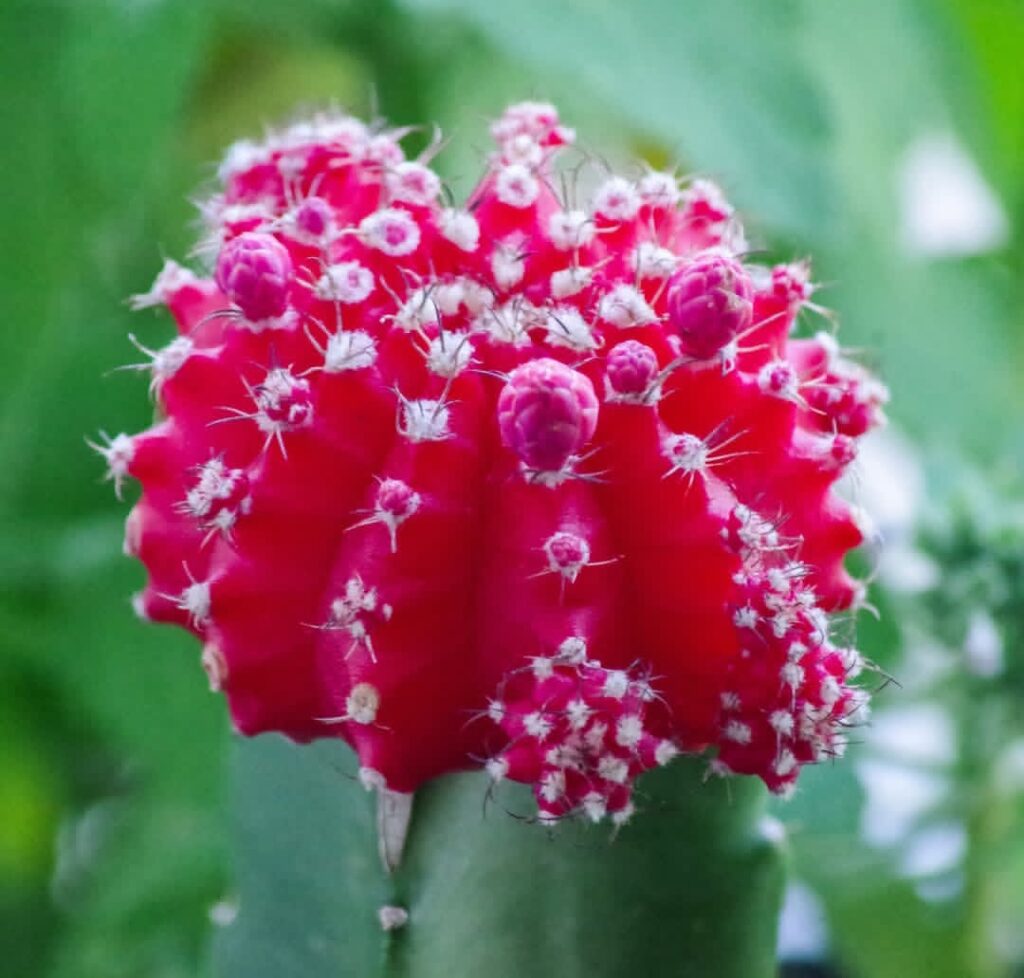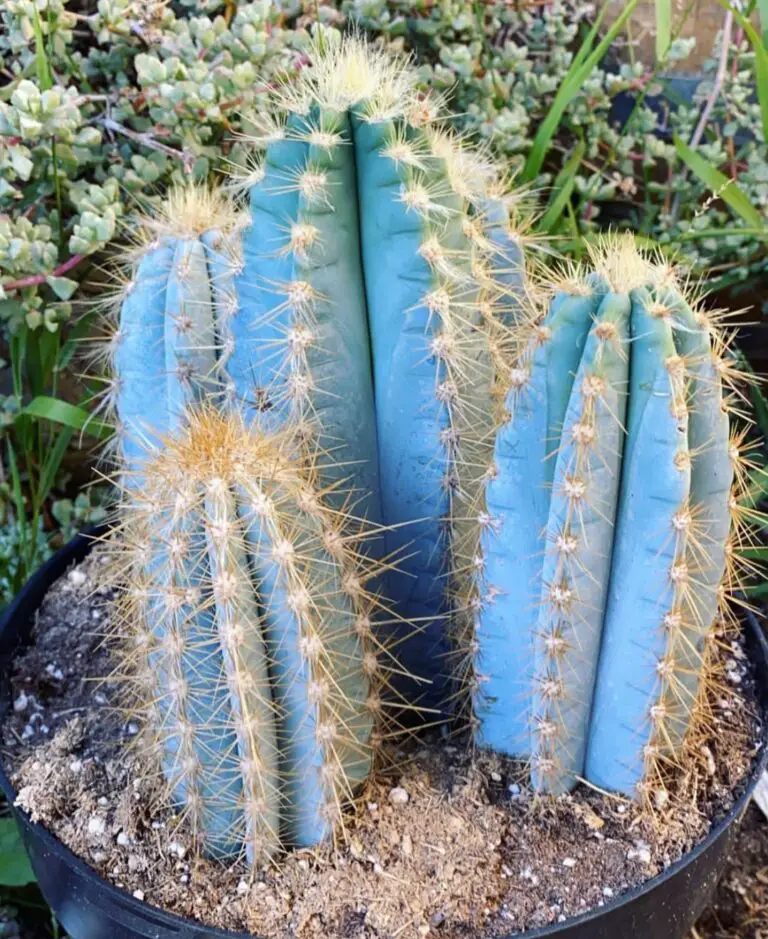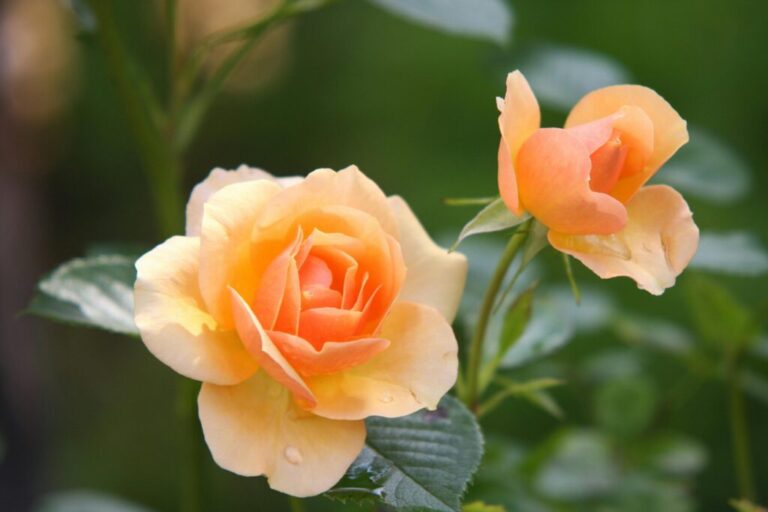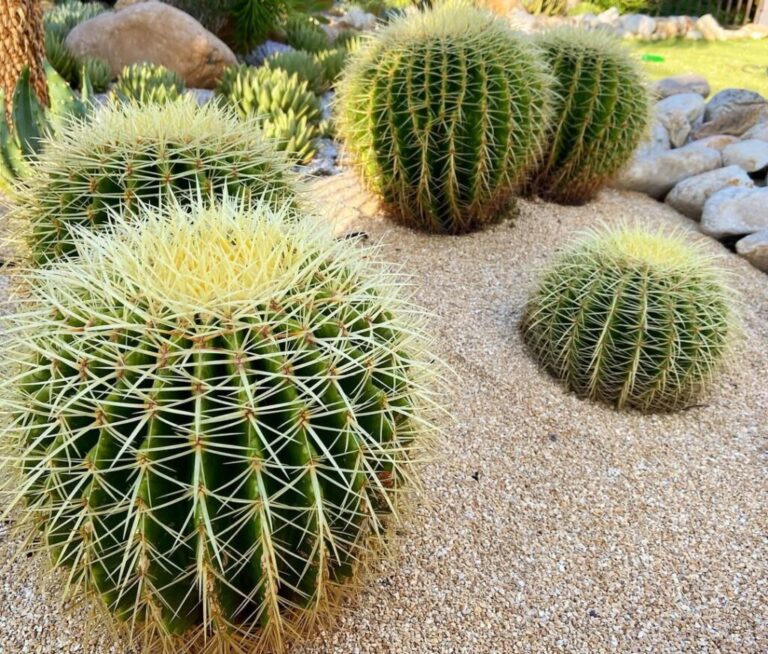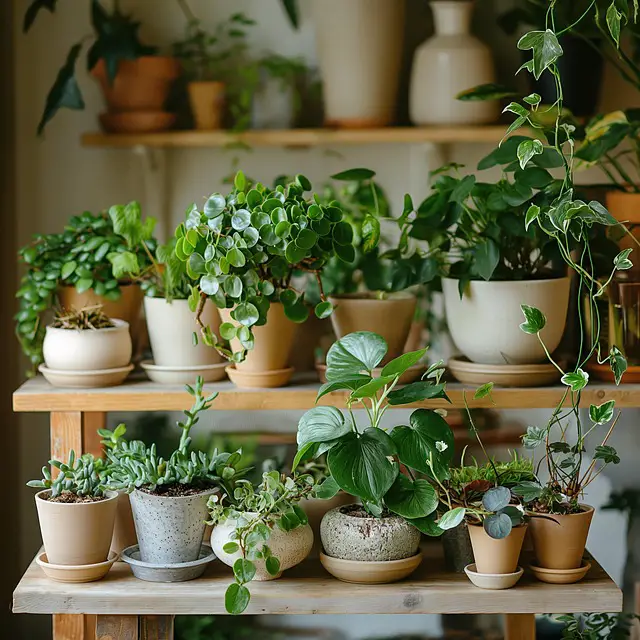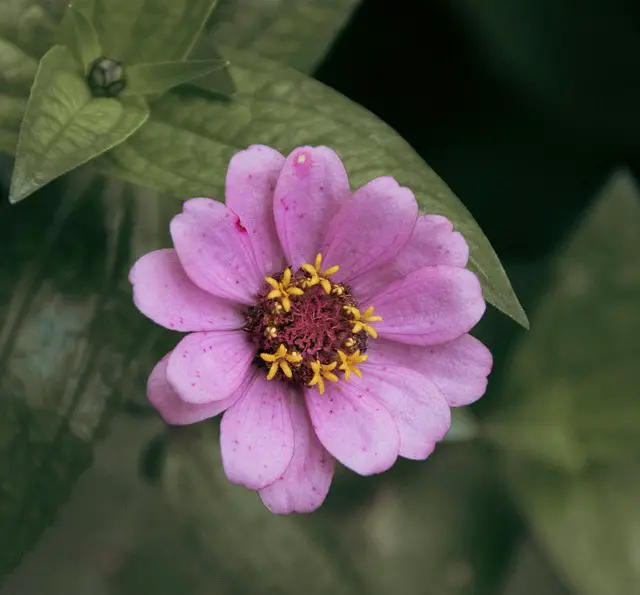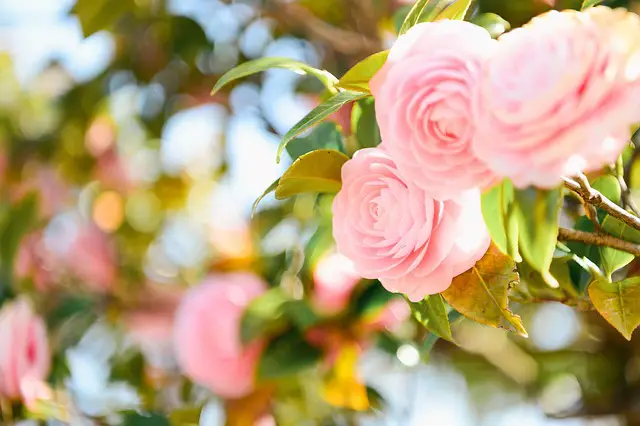If you’ve ever walked into a plant shop and had your eyes immediately drawn to a tiny, brightly colored cactus sitting like a jewel on top of a green stem—chances are, you’ve already met the moon cactus. With neon hues like hot pink, fiery orange, and sunshine yellow, these little cacti aren’t just plants; they’re living art pieces that brighten up any windowsill.
Moon cactus care might seem simple at first glance, but there’s more to this little plant than meets the eye. What makes the moon cactus so unique is that it’s actually two cacti in one—grafted together to survive. The top, vibrant part lacks chlorophyll and can’t live on its own, while the green bottom acts like a life support system. Understanding this relationship is the key to keeping your moon cactus healthy and thriving.
In this guide, we’ll walk you through the 10 best expert tips to help you grow faster, graft successfully, and avoid the common mistakes that lead to a quick and disappointing cactus demise. Whether you’re just starting your indoor garden or you’ve already lost a moon cactus or two, this post will give you clear, friendly advice you can actually follow.
Because let’s face it—plant care shouldn’t feel like rocket science. Ready to learn how to keep your moon cactus colorful, happy, and alive for years? Let’s dig in.
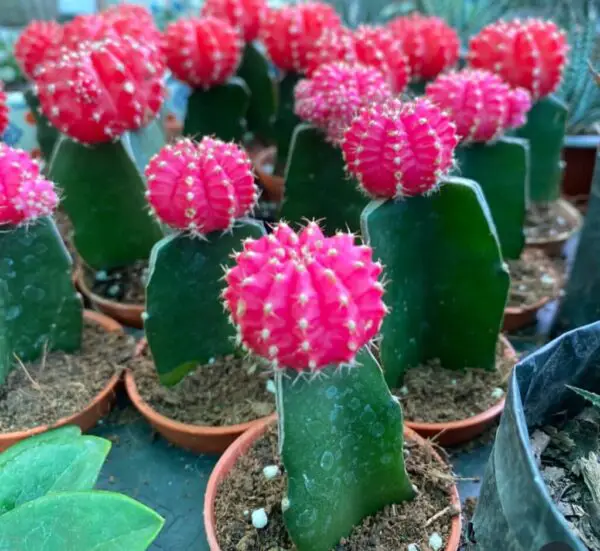
- 1 ✅ 10 Best Expert Tips to Grow & Graft Fast
- 2 1. 🌈 Understand What a Moon Cactus Really Is
- 3 2. ☀️ Give It the Right Light (But Not Too Much)
- 4 3. 💧 Water Smartly, Not Frequently
- 5 4. 🌡️ Keep Temperatures Comfortable
- 6 5. 🌱 Choose the Best Soil Mix
- 7 6. 🪴 Repot Gently Every 2 Years
- 8 7. 🌿 Feed Monthly with Organic Cactus Fertilizer
- 9 8. ✂️ Learn Grafting Basics for Propagation
- 10 9. 🌵 Watch for Signs of Stress or Rot
- 11 10. 🧪 Propagate Pups from the Base (With Caution)
- 12 Frequently Asked Questions: Moon Cactus Care
✅ 10 Best Expert Tips to Grow & Graft Fast
1. 🌈 Understand What a Moon Cactus Really Is
The moon cactus is not a single plant but two cacti combined: the vibrant top (Gymnocalycium mihanovichii), which lacks chlorophyll, and a green base cactus (usually Hylocereus), which provides nutrients. Without grafting, the colorful top would die. Knowing this relationship helps you better understand why these plants need extra care.
💡 Tip: Never separate the top and bottom—it’s a life-support system, not a decoration.
2. ☀️ Give It the Right Light (But Not Too Much)
Moon cacti prefer bright, indirect sunlight. A few hours of gentle morning sun is fine, but never place them in direct midday rays. Direct light can cause sunburn or fade the top’s vivid colors. Place it on an east-facing windowsill or under a grow light indoors for best results.
💡 Tip: If your cactus color starts to fade, move it to slightly less intense light.
3. 💧 Water Smartly, Not Frequently
Overwatering is the #1 killer of moon cacti. Only water when the top inch of soil is dry. Use the deep-watering method and ensure the pot has good drainage. Avoid letting water touch the top cactus, which is more prone to rotting than the base. Stick to a 7–14 day watering cycle.
💡 Tip: If you’re unsure, skip a watering—moon cacti handle drought better than soggy soil.
4. 🌡️ Keep Temperatures Comfortable
Warm indoor temperatures between 64°F and 77°F (18°C and 25°C) are ideal for moon cactus.Avoid placing them near cold drafts, air conditioners, or heaters. They can live outdoors in USDA zones 10–11, but indoor conditions are usually more stable and better for long-term health.
💡 Tip: If your fingers feel chilly, your moon cactus probably does too—bring it inside.
5. 🌱 Choose the Best Soil Mix
Well-draining soil is essential. A cactus or succulent mix is perfect, or you can make your own: equal parts sand, perlite, and peat moss. Avoid heavy, organic-rich soil that retains moisture—it increases the risk of root rot. Light, gritty soil mimics their natural desert habitat.
💡 Tip: Add crushed charcoal or sterilized gravel to improve air flow in the soil.
6. 🪴 Repot Gently Every 2 Years
Repot your moon cactus every two years in early spring before active growth starts. Use a pot just one size larger. Remove the cactus gently, trim any rotting roots, and refresh the soil. Be careful not to twist or break the grafted joint during repotting.
💡 Tip: Let the cactus sit out for a day after repotting before watering to reduce shock.
7. 🌿 Feed Monthly with Organic Cactus Fertilizer
Feed moon cacti once a month during the growing season with diluted organic cactus fertilizer. Avoid synthetic or high-nitrogen feeds—they encourage rot and unnatural growth. Before fertilizing, flush the soil with water to prevent salt buildup from harming the roots.
💡 Tip: Fertilize during bright months only (spring–early fall); skip feeding in winter.
8. ✂️ Learn Grafting Basics for Propagation
To propagate, cut the top of a colorful cactus and graft it onto a healthy green base using a sterilized blade. Secure with rubber bands and keep in bright but indirect light. The graft usually heals in 7–10 days. Puppies that are unable to live on their own can have their lives prolonged through grafting.
💡 Tip: Always let the cut surfaces dry slightly before grafting to prevent infection.
9. 🌵 Watch for Signs of Stress or Rot
Signs like yellowing, a soft base, or a mushy top mean something’s wrong—often overwatering or too much sun. Remove the plant from soil if rot sets in, trim affected roots, and let it dry out before repotting. Catching early signs saves the cactus from death.
💡 Tip: Give your cactus a monthly “health check” to spot issues before they spread.
10. 🧪 Propagate Pups from the Base (With Caution)
Moon cacti sometimes produce small pups near the base. These can be cut, dried, and grafted onto a new rootstock. Don’t plant them on their own—they need chlorophyll from a base cactus to survive. Use sharp, sterile tools and allow pups to callous before grafting.
💡 Tip: If the pup has green patches, it may be self-sustaining—experiment with potting separately.
Moon cactus care isn’t hard once you understand its unique structure and needs. With the right light, soil, and water, your colorful cactus will thrive for years—even longer if you master grafting.These 10 expert tips give you everything you need to enjoy fast growth and lasting beauty. Whether you’re new to succulents or a grafting pro, the moon cactus is a cheerful, rewarding plant.
Frequently Asked Questions: Moon Cactus Care
1.Why is moon cactus care different from ordinary cactus care, and what does it entail?
Since moon cacti are essentially two cacti grafted together, their maintenance is different. The vibrant top is completely dependent on the green rootstock for survival because it lacks chlorophyll.
Moon cactus care involves maintaining this grafted relationship by giving the right light, water, and soil to both parts of the plant.
2 How frequently should I water my moon cactus to ensure optimal care?
In moon cactus care, watering should be done every 10 to 14 days during the growing season. When the top inch of soil is dry, only water. Moon cactus care necessitates monitoring moisture levels to prevent root or stem rot, as overwatering is a typical problem.
3.Is it possible to care for moon cacti indoors all year round?
Yes, moon cactus care is perfectly suited for indoor environments as long as the plant receives bright, indirect sunlight and stays away from cold drafts. Indoor moon cactus care also means keeping a consistent temperature range and rotating the pot occasionally for even light exposure.
4. What kind of soil works best for moon cactus care?
Moon cactus maintenance requires cactus-specific soil that drains well. Root rot is avoided with a mixture of peat moss, perlite, and sand.Avoid heavy organic soil. For optimal moon cactus care, the potting mix should mimic arid desert conditions to keep the plant healthy and its roots dry.
5.What temperature is required to properly care for moon cacti?
Maintain temperatures between 64°F and 77°F for the best moon cactus care. The plant should never be exposed to temperatures lower than 50°F because it is susceptible to cold.
Moon cactus care during winter means moving it indoors and avoiding cold windowsills or drafty rooms.
6. Can I use regular fertilizer in moon cactus care?
Moon cactus care benefits from a monthly dose of diluted organic cactus fertilizer during the growing season. Avoid using standard houseplant fertilizer, as it may contain too much nitrogen. Good moon cactus care includes flushing the soil before feeding to prevent salt build-up.
7. How important is grafting in moon cactus care?
Grafting is at the core of moon cactus care. The absence of chlorophyll prevents the vibrant top from surviving on its own.Successful moon cactus care requires understanding this graft and occasionally re-grafting if the base cactus weakens or becomes unhealthy over time.
8. Can moon cactus care include propagation from pups?
Yes, but it’s tricky. To survive, moon cactus puppies need to be grafted onto a rootstock.Simply planting them in soil won’t work unless they have green patches. Moon cactus care for pups involves clean cuts, drying, and careful reattachment to a healthy base.
9 . Does the moon cactus require light to thrive?
Of course! Moon cacti require bright, indirect light to thrive. While too little sunshine results in fading and feeble growth, too much sunlight can burn the colourful top. Place your plant under a grow lamp or next to an east-facing window for balanced moon cactus care.
What symptoms indicate inadequate moon cactus care?
A mushy base, a squishy or discoloured top, or a shrinking cactus body are all warning signs. In moon cactus care, these are warning signs that are frequently brought on by excessive watering, inadequate light, or low humidity. To rescue your plant, take immediate action: remove rot, repot in dry soil, and enhance growing conditions.
11. How long does a moon cactus live with proper moon cactus care?
With good moon cactus care, your plant can live 3 to 5 years, depending on the health of the rootstock and care routine. While not long-lived, regular repotting, correct watering, and attention to the graft can extend the life of your moon cactus significantly.
12. Does moon cactus care change in winter?
Yes. During winter, moon cactus care involves reducing watering frequency to once a month and avoiding fertilization.The cactus should be kept out of chilly drafts yet in a bright area.Lower temperatures slow growth, so moon cactus care in winter focuses on maintaining survival, not growth.
13. Is moon cactus care beginner-friendly?
Yes, moon cactus care is ideal for beginners who follow basic rules: don’t overwater, give indirect light, and use the right soil. While grafting may be advanced, everyday moon cactus care is low maintenance and very doable for new plant lovers.
14. Can I repot my plant during active moon cactus care?
Absolutely. In moon cactus care, repotting every two years in spring helps refresh the soil and inspect root health. Always use a pot with drainage holes. After repotting, wait a few days before watering to allow the plant to adjust and avoid transplant shock.
15. Why is moon cactus care trending among indoor plant lovers?
Moon cactus care has become popular because the plant adds a pop of color without demanding constant attention. Its compact size and low-maintenance needs make moon cactus care appealing for small apartments, work desks, and beginner gardeners looking for an easy win.
